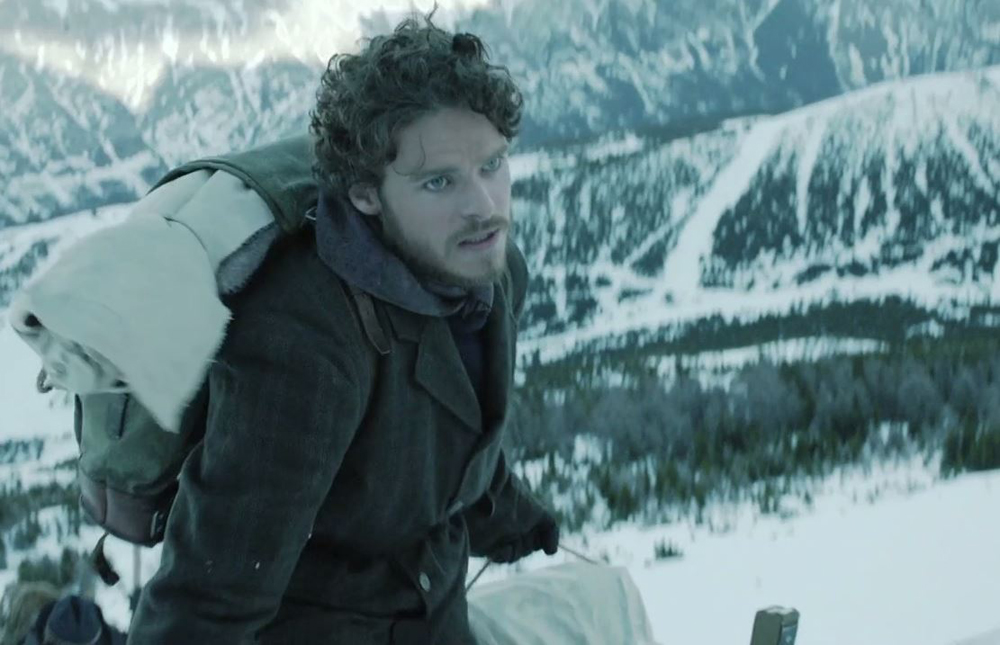Klondike: The Real Story Behind the Gold Rush Miniseries

Updated Sat. Jan. 18 at 10:50 a.m. ET.
NEW YORK — The soft luster of gold has won the hearts of humans for millennia, shining in ancient jewelry and other artifacts from regions as distant as China to Egypt to Peru. In modern times, few other minerals have driven hordes of inexperienced miners into the wilderness, often only to return empty handed or in a coffin.
Discovery Channel is now prospecting the hearts of television viewers around the world with their first-ever scripted miniseries, called "Klondike" — a period piece set at the end of the 19th century during a brief but fervent gold rush in the Klondike region of the Yukon.
In the three-part miniseries that launches on Monday (Jan. 20) at 8 p.m. EST, two friends in their early 20s climb snowy passes, raft rapid-strewn rivers, dodge wolves, and nearly lose everything several times as they make their way into the lawless gold rush town of Dawson City. There, they continue struggling to survive amongst gun fights, disease and greed. [Video Interview with Klondike Cast on Gold Carpet]
Fictional events, real extreme environment
All of the characters and events are fictional, but the directors say that the script was heavily researched and based on real events. Filming was done in the Canadian province of Alberta, south of Klondike but still full of the icy and rugged conditions that Klondike miners would have faced.
"It was a hard challenge, especially in period costume because you are not equipped for the world you are in," lead actor Richard Madden told LiveScience yesterday (Jan. 16) on the gold carpet of Klondike's premiere. "So actually these extreme environments as an actor really help you play the role because you understand at least 10 percent of what they went through."
Sign up for the Live Science daily newsletter now
Get the world’s most fascinating discoveries delivered straight to your inbox.
Actress Abbie Cornish, one of only two female leads in the show, agreed that the rugged conditions helped the cast internalize the struggles of their characters.
"What I felt was that the landscape and the elements started to inform us, on a much deeper level, what these characters went through, and the incredible achievements they made," Cornish told LiveScience. "It was a real adventure, and I think we were really lucky to have gone through that."
The achievements of those who successfully reached Dawson City in the late 1890s were, indeed, treacherous and often against the odds, according to Karl Gurke, historian at the Klondike Gold Rush National Historical Park in Alaska.
Aside from the perils of mining itself, the journey to Dawson City posed serious obstacles as well. Thousands of so-called stampeders left from Seattle by way of steam boat, and traveled about 1,000 miles (1,600 kilometers) to the newly-settled tent towns of Dyea and Skagway, Alaska. From there, they would cross about 30 miles (50 km) of the steep, avalanche-prone terrain of Alaska's Coast Range to get to streams that would bring them to the Yukon River and ultimately to Dawson in Canada.
The journey should have been achievable in several days, but the stampeders weren't able to complete it in just one go: The Canadian government required that all miners bring at least one year's supply of food with them, which could weigh up to 1 ton (454 kilograms) and had to be transported in multiple treks, Gurke said. So the miners would relay their load — consisting of hundreds of cans of beans, bags of flour, bacon, cooking utensils, tents and other living supplies — and travel back and forth across the snowy pass multiple times, turning a 30-mile journey into a 100- or sometimes even 200-mile (160 or 300 km) trek that took about 3 months, Gurke said. All of this occurred in the depths of winter, to ensure that they would get to Dawson City in time for the ground to thaw in spring.
Once they transported their materials over the pass, the miners would either build a boat or ride someone else's boat roughly 600 miles (960 km) down the Yukon River into Dawson City, passing through several potentially life-threatening rapidsalong the way.
Seeking more than just gold?
As many as 300,000 prospectors tried to get to the Klondike region between the years of 1897 and 1898, but only about 30,000 made it there, Gurke said. Many fewer of those actually returned rich.
"There were a lot of people who did get some gold, and maybe a couple of handfuls who really struck it wealthy, and less than a handful that kept their wealth," Gurke said. "Most people had massive parties and spent their wealth fast, or speculated and lost it in speculation."
But the riches may only have been one component of what the gold diggers actually sought out in Dawson City, Klondike actress Conor Leslie told LiveScience at the premiere.
"There was no law in Dawson City, it was new," Leslie said. "The gold was obviously the surface of what they wanted but I think everyone — men and women — wanted something else, which was 'I can leave my past behind and go to this place that has something else to offer.' I think that was more of the theme than just the gold, really."
The Klondike gold rush ended almost as quickly as it started: The first gold was discovered in 1896, and the majority of the stampeders left by 1898. Today, modern mining operations continue to collect gold from the region.
Editor's note: This story has been updated to clarify that the show is a three-part miniseries, not a six-part miniseries.
Follow Laura Poppick on Twitter. Follow us @livescience, Facebook & Google+. Original article on LiveScience.










